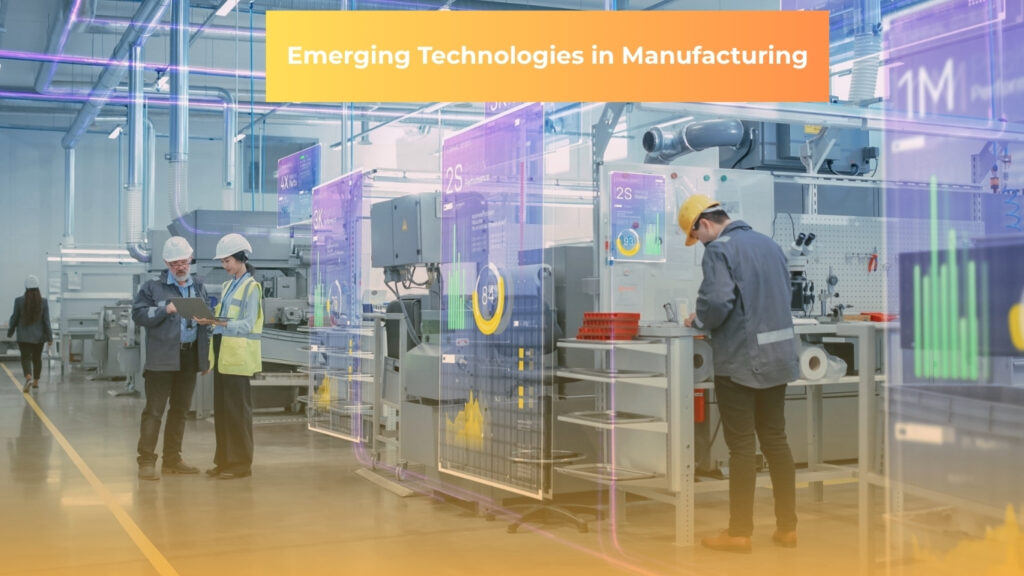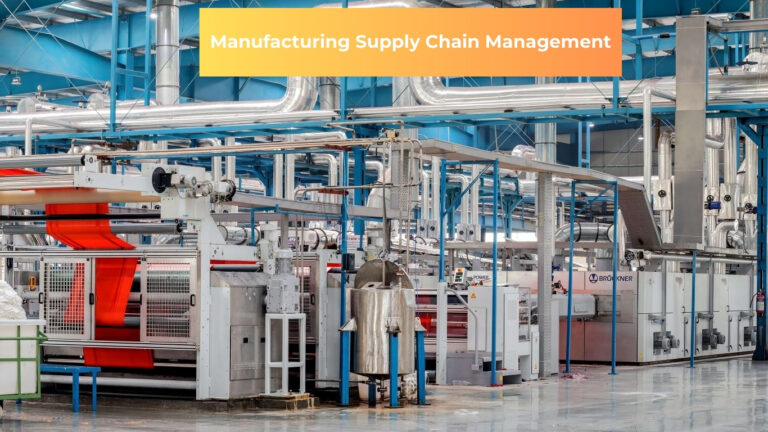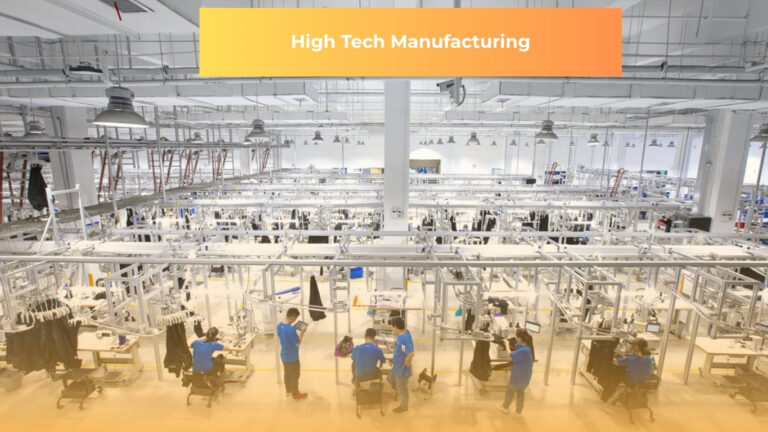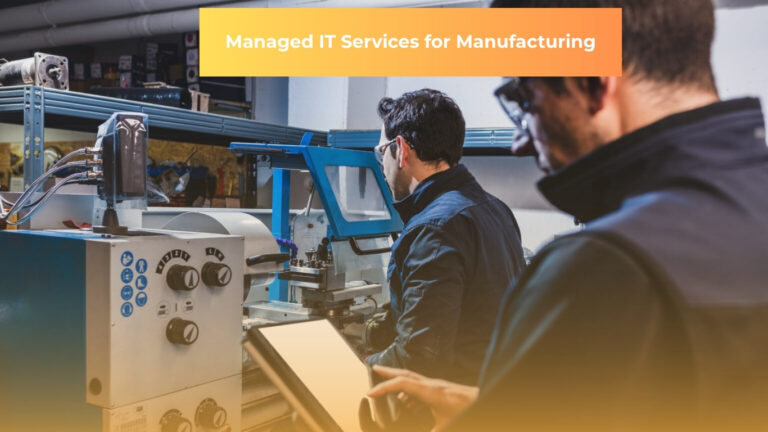The manufacturing industry stands at the forefront of a revolutionary transformation, driven by emerging technologies in manufacturing that are reshaping production processes and redefining operational excellence. With the global manufacturing market output reaching a record $34.8 trillion in 2024, manufacturers worldwide are increasingly adopting advanced technologies to maintain competitive advantage and drive sustainable growth.
🚀 Access valuable AI-driven IT strategy documents and transform your business today.
What are Emerging Technologies in Manufacturing?
Emerging technologies in manufacturing represent cutting-edge innovations that transform traditional production systems through advanced automation, artificial intelligence, and digital integration. These technologies encompass artificial intelligence (AI), robotics, Internet of Things (IoT), additive manufacturing, smart manufacturing systems, and cyber-physical production platforms that revolutionize how products are designed, produced, and delivered.
The emerging technologies manufacturing market is experiencing unprecedented growth, valued at $226.6 million in 2024 and projected to reach $1,147.6 million by 2034, representing a compound annual growth rate (CAGR) of 17.9%. This explosive growth reflects manufacturers’ increasing recognition that digital transformation is no longer optional but essential for survival in the global marketplace.
Manufacturing technology trends indicate that 98% of manufacturing organizations have embarked on their digital transformation journey, with technology investments accounting for 30% of operating budgets in 2024, up from 23% in 2023.
🚀 Access valuable AI-driven IT strategy documents and transform your business today.
This shift demonstrates the critical importance of emerging technologies manufacturing in driving operational efficiency and competitive advantage.
How Emerging Technologies Manufacturing Works
The implementation of emerging technologies in manufacturing follows a systematic approach that integrates multiple technological components to create intelligent, interconnected production systems. At its core, this transformation leverages data-driven decision-making, real-time monitoring, and predictive analytics to optimize every aspect of manufacturing operations.
Smart manufacturing systems serve as the foundation, connecting machines, sensors, and human operators through advanced communication networks. These systems collect vast amounts of production data, which is then processed using AI-driven manufacturing solutions to identify patterns, predict maintenance needs, and optimize production schedules.
Contact us today to begin your digital transformation journey!
The digital transformation manufacturing process typically begins with sensor deployment across production equipment, followed by data integration platforms that consolidate information from multiple sources. Machine learning algorithms analyze this data to provide actionable insights, while automation systems execute optimized production plans without human intervention.

Manufacturing automation technologies enable real-time adjustments to production parameters, ensuring consistent quality while minimizing waste and downtime. This interconnected approach creates a self-optimizing production environment that continuously improves performance through feedback loops and adaptive learning.
Advantages of Emerging Technologies in Manufacturing
The adoption of emerging technologies in manufacturing delivers substantial benefits across multiple operational dimensions, with manufacturers reporting significant improvements in efficiency, cost reduction, and competitive positioning.
Cost Reduction and Operational Efficiency: Industry reports reveal that AI and automation can reduce operational costs by 20-30% while improving efficiency by over 40%. Manufacturers implementing comprehensive digital transformation initiatives typically achieve a 37% reduction in manufacturing defects, 28% decrease in unplanned downtime, and 22% improvement in overall equipment effectiveness (OEE).
Enhanced Quality Control: AI-powered manufacturing quality control systems provide unprecedented accuracy in defect detection and prevention. Advanced vision systems and predictive analytics enable manufacturers to identify quality issues before they impact production, reducing scrap rates by up to 75%.
👉 Get our in-depth IT communication guide now—free to download.
Predictive Maintenance Benefits: Manufacturing predictive maintenance powered by IoT sensors and machine learning algorithms can reduce machine downtime by 30%-50% and increase machine life by 20%-40%. This proactive approach prevents costly breakdowns while optimizing maintenance schedules and resource allocation.
Supply Chain Optimization: Digital manufacturing supply chains leverage real-time data and AI analytics to improve demand forecasting, inventory management, and logistics coordination. Manufacturers report up to 23% reduction in inventory levels while maintaining service quality.
Scalability and Flexibility: Advanced manufacturing technologies enable rapid production changes and customization without significant infrastructure modifications. Companies can increase capacity by 30% without adding floor space through intelligent automation and process optimization.
Data-Driven Decision Making: Real-time analytics provide manufacturers with actionable insights for strategic planning, resource allocation, and performance optimization. This capability enables faster response to market changes and customer demands.
Contact HBLAB today for a consultation on smart manufacturing solutions!
Challenges and Risks of Emerging Technologies Manufacturing
Despite significant benefits, implementing emerging technologies in manufacturing presents several challenges that manufacturers must address to ensure successful adoption and return on investment.

High Implementation Costs: The initial investment required for manufacturing digital transformation can be substantial, with comprehensive smart factory implementations requiring millions of dollars in technology infrastructure, integration, and training. Many manufacturers struggle to justify these upfront costs, particularly when ROI may not be immediately apparent.
Skills Gap and Workforce Training: The rapid evolution of manufacturing technology trends has created a significant skills gap in the industrial workforce. Organizations report that finding qualified personnel to operate and maintain advanced manufacturing systems remains a critical challenge, with 76% of manufacturers planning to invest in AI-based solutions but lacking the expertise to implement them effectively.
Contact us today to begin your digital transformation journey!
Cybersecurity Vulnerabilities: Connected manufacturing systems create new attack vectors for cybersecurity threats. As production systems become more interconnected, manufacturers face increased risks of cyberattacks that could disrupt operations or compromise sensitive data.
Integration Complexity: Combining legacy systems with emerging manufacturing technologies often requires complex integration processes that can disrupt ongoing operations. Many manufacturers struggle with data standardization and system compatibility issues.
👉 Get our in-depth IT communication guide now—free to download.
Change Management Resistance: Digital transformation faces people-related barriers, with employees often resistant to new technologies and processes. Successful implementation requires comprehensive change management strategies and cultural adaptation.
Technology Obsolescence: The rapid pace of technological advancement means that investments in specific technologies may become outdated quickly, requiring continuous updates and upgrades to maintain competitive advantage.
Case Studies: Success with Emerging Technologies Manufacturing
Real-world implementations of emerging technologies in manufacturing demonstrate tangible benefits and provide valuable insights for manufacturers considering digital transformation initiatives.
Automotive Components Manufacturer Case Study: A mid-sized automotive components manufacturer invested $4.2 million in a comprehensive smart factory solution including automated assembly cells, real-time quality monitoring, predictive maintenance, and integrated manufacturing execution systems. Within two years, the company achieved full ROI with a 37% reduction in manufacturing defects, 28% decrease in unplanned downtime, and 15% reduction in production costs. The implementation enabled a 30% capacity expansion without additional floor space, generating $7.5 million in additional annual revenue.
Avalign Technologies Medical Device Success: Avalign Technologies, an Illinois-based precision medical equipment manufacturer, partnered with MachineMetrics to implement IoT solutions across 132+ machines at four facilities. The manufacturing IoT implementation delivered remarkable results within nine months: 40% increase in OEE, 9.9% increase in throughput, $4.5 million capacity utilization increase, and 14,000 hours saved in operational efficiency.
Best Maid Food Manufacturing Transformation: Best Maid, a food product provider, achieved 185% ROI within six months by implementing comprehensive ERP and automation systems. The transformation reduced raw material inventory by $500,000, eliminated $50,000 in mislabeled items, and decreased financial close processes to 25% of previous requirements. The company moved from being four months behind in financial reporting to closing within four weeks of month-end.
👉 Get our in-depth IT communication guide now—free to download.
Siemens Smart Factory Implementation: Siemens leveraged AI-powered manufacturing processes for predictive maintenance, intelligent scheduling, and real-time quality control in its SMT electronics production. The implementation cut inspection effort by 50%, boosted First Pass Yield by 15%, and reduced false positives by 60%, demonstrating how AI manufacturing optimization can redefine quality assurance and efficiency.
Role of Emerging Technologies in Manufacturing Innovation
Artificial Intelligence and Machine Learning serve as the backbone of modern manufacturing innovation, enabling predictive analytics, autonomous decision-making, and continuous process optimization. AI systems analyze vast amounts of production data to identify patterns, predict equipment failures, and optimize manufacturing processes in real-time.
Internet of Things (IoT) Integration creates interconnected manufacturing ecosystems where sensors, machines, and systems communicate seamlessly. This connectivity enables real-time monitoring, data collection, and remote control capabilities that form the foundation of smart manufacturing operations.
Digital Twin Technology provides virtual representations of physical manufacturing processes, enabling simulation, testing, and optimization without disrupting actual production. Manufacturers use digital twins to predict outcomes, test process changes, and identify improvement opportunities before implementation.
Additive Manufacturing and 3D Printing revolutionize production by enabling complex geometries, rapid prototyping, and on-demand manufacturing. This technology reduces material waste, accelerates product development, and enables mass customization at scale.
Robotics and Automation continue evolving with collaborative robots (cobots) that work alongside human operators, enhancing safety and productivity while handling repetitive or hazardous tasks. Advanced robotics systems incorporate AI and machine learning for adaptive behavior and intelligent decision-making.
When to Use Emerging Technologies Manufacturing?
Manufacturers should consider implementing emerging technologies in manufacturing when facing specific operational challenges or strategic objectives that align with digital transformation capabilities.
Scalability Requirements: Organizations experiencing rapid growth or fluctuating demand benefit from flexible manufacturing systems that can adapt quickly to changing production requirements without significant infrastructure investments.
Quality Improvement Needs: Manufacturers struggling with defect rates, customer complaints, or quality control issues should prioritize AI-powered quality control and real-time monitoring systems that provide immediate feedback and corrective actions.
Cost Reduction Pressures: Companies facing margin pressure or competitive cost challenges can leverage automation and process optimization to reduce operational expenses while maintaining or improving quality standards.
Predictive Maintenance Benefits: Organizations with critical equipment that experiences frequent breakdowns or high maintenance costs should implement IoT sensors and predictive analytics to transition from reactive to proactive maintenance strategies.
Supply Chain Complexity: Manufacturers managing complex global supply chains benefit from digital platforms that provide real-time visibility, demand forecasting, and logistics optimization capabilities.
Skills Shortage Challenges: Companies struggling to find qualified workers can use automation and AI-assisted systems to maintain productivity while reducing dependence on specialized labor.
HBLAB – Your Trusted Partner in Manufacturing Technology Innovation
In an era where digital transformation drives manufacturing competitiveness, HBLAB stands as your strategic technology partner, delivering cutting-edge solutions that transform traditional manufacturing processes into intelligent, data-driven operations.
With over 630+ skilled professionals and deep expertise in emerging technologies manufacturing, HBLAB combines advanced technical capabilities with industry knowledge to deliver customized solutions that address your specific manufacturing challenges. Our team of senior-level engineers (30% with 5+ years of experience) specializes in developing AI-powered manufacturing systems, IoT integration platforms, and smart factory solutions that drive measurable ROI.
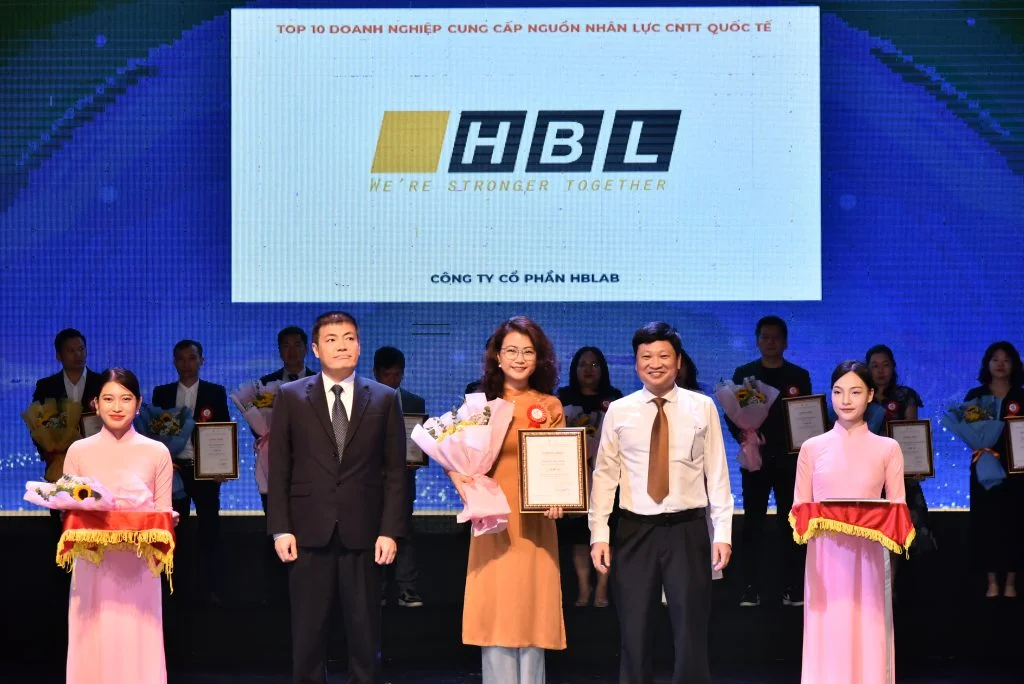
Our Manufacturing Technology Expertise:
- AI-Driven Manufacturing Solutions: Predictive maintenance systems, quality control automation, and production optimization algorithms
- Industrial IoT Implementation: Sensor networks, real-time monitoring platforms, and data analytics dashboards
- Smart Manufacturing Systems: Digital twin development, cyber-physical system integration, and automated production control
- Manufacturing Analytics Platforms: Data visualization, predictive analytics, and performance optimization tools
- Enterprise System Integration: ERP connectivity, supply chain management, and operational intelligence platforms
HBLAB’s CMMI Level 3 certification ensures process excellence and quality delivery, while our cost-effective solutions provide 30% lower implementation costs compared to traditional providers. Our flexible engagement models – including offshore, onsite, and dedicated teams – adapt to your specific project requirements and budget constraints.
Whether you’re implementing your first IoT sensors or developing comprehensive smart factory ecosystems, HBLAB provides end-to-end support from consulting and system design to deployment and ongoing maintenance. Our proven track record in manufacturing technology transformation ensures your digital initiatives deliver sustainable competitive advantage.
👉 Ready to transform your manufacturing operations with emerging technologies?
Start your project with HBLAB today!
Conclusion
Emerging technologies in manufacturing represent a fundamental shift toward intelligent, interconnected production systems that deliver unprecedented levels of efficiency, quality, and competitive advantage. With the global market for these technologies projected to reach $1.14 billion by 2034, manufacturers must embrace digital transformation to remain competitive in an increasingly complex global marketplace.
The evidence overwhelmingly demonstrates that organizations investing in AI-powered manufacturing, IoT integration, and smart factory systems achieve substantial returns through reduced costs, improved quality, and enhanced operational flexibility. As traditional manufacturing processes evolve into data-driven, autonomous systems, early adopters position themselves for sustained success while late adopters risk obsolescence.
Successful implementation requires strategic planning, cultural adaptation, and partnership with experienced technology providers who understand both manufacturing operations and emerging technology capabilities. The future belongs to manufacturers who recognize that emerging technologies in manufacturing are not merely operational improvements but strategic imperatives for long-term competitiveness and growth.
👉 Transform your manufacturing operations with HBLAB’s emerging technology solutions.
Frequently Asked Questions
Q: What are the most important emerging technologies in manufacturing?
A: The most important emerging technologies in manufacturing include artificial intelligence for predictive maintenance and quality, Industrial IoT for real-time visibility, robotics and automation for throughput, additive manufacturing for rapid iteration, digital twins for simulation, and smart manufacturing systems for connected, autonomous operations; together these emerging technologies in manufacturing create intelligent factories that optimize efficiency and quality.
Q: How much can manufacturers save by implementing emerging technologies in manufacturing?
A: Manufacturers adopting emerging technologies in manufacturing can cut operational costs by 20–30% and improve efficiency by 40% or more through AI-driven automation, while predictive maintenance—another core pillar of emerging technologies in manufacturing—often reduces downtime by 30–50% and extends asset life by 20–40%.
Q: What is the ROI timeline for emerging technologies in manufacturing?
A: ROI for emerging technologies in manufacturing typically ranges from 6 months to 5 years, with targeted automation and analytics use cases paying back in under 24 months, and full smart factory programs—spanning multiple emerging technologies in manufacturing—delivering returns across 24–60 months as data maturity and process integration scale.
Q: How do emerging technologies in manufacturing improve product quality?
A: AI vision, machine learning, and real-time analytics—central emerging technologies in manufacturing—detect defects earlier than manual inspection, trigger automatic process adjustments, and reduce scrap rates dramatically, improving first-pass yield while standardizing quality across lines and shifts.
Q: What skills are needed to leverage emerging technologies in manufacturing?
A: Organizations succeeding with emerging technologies in manufacturing build capabilities in data analytics, Industrial IoT architecture, AI/ML engineering, cybersecurity, and digital integration, supported by structured upskilling programs to operate smart manufacturing systems and sustain continuous improvement.
Q: What are the new technologies in manufacturing right now?
A: Current new technologies in manufacturing include AI for automated decisioning, IIoT sensors and edge analytics, digital twins for line and plant modeling, collaborative robots on mixed-model lines, large-format and hybrid additive processes, and cloud/edge platforms that operationalize emerging technologies in manufacturing at scale.
Q: What are the 10 emerging technologies, and how do they relate to emerging technologies in manufacturing?
A: A contemporary top-10 set features structural battery composites, osmotic power, nanozymes, next-gen nuclear, engineered living therapeutics, autonomous biochemical sensing, collaborative sensing, green nitrogen fixation, GLP‑1s for neurodegeneration, and generative watermarking; manufacturers can map these to materials innovation, process energy, advanced sensing, and digital trust, extending the frontier of emerging technologies in manufacturing.
Q: What are the 4 emerging technologies most critical for factories?
A: The four most critical emerging technologies in manufacturing are AI/ML, Industrial IoT, digital twins, and additive manufacturing, because they directly unlock predictive decisions, real-time visibility, virtual commissioning, and rapid iteration across product and process.
Q: What are the next-generation manufacturing technologies?
A: Next-generation emerging technologies in manufacturing combine AI-enhanced robotics and cobots, private 5G and edge for ultra-low latency control, multi-scale digital twins of lines and plants, advanced large-format/hybrid additive, and resilient cloud MES/ERP integrated with analytics for autonomous planning.
Q: What is the best emerging technology for manufacturers to start with?
A: The best starting point among emerging technologies in manufacturing is AI for predictive maintenance and quality, because it leverages existing machine data, yields fast wins in uptime and yield, and creates a data foundation for broader smart manufacturing initiatives.
Q: What are the 5 characteristics of emerging technologies in manufacturing?
A: The five defining characteristics of emerging technologies in manufacturing are novelty with rapid maturation, high uncertainty and risk, convergence across disciplines, scalable enterprise impact, and evolving governance and ethics that shape responsible deployment.
Q: What are the technologies used in fifth-generation (5G) manufacturing connectivity?
A: Fifth-generation connectivity underpinning emerging technologies in manufacturing uses millimeter wave, massive MIMO, network slicing, edge computing, and ultra-reliable low-latency communications to support closed-loop control, high-density sensing, and mobile robotics.
Q: What are the five stages of technology in the manufacturing context?
A: For emerging technologies in manufacturing, the common lifecycle is research and invention, emergence and prototyping, diffusion and early adoption, maturation and standardization, and legacy or baseline integration where the technology becomes industrial default.
Q: What are the 5 E’s of ICT, and why do they matter to emerging technologies in manufacturing?
A: The 5 E’s—Explore, Express, Exchange, Evaluate, Exhibit—guide digital literacy and change management that help teams adopt emerging technologies in manufacturing by structuring experimentation, knowledge sharing, critical assessment, and results communication.
Q: What are the 5 emerging trends in ICT that influence emerging technologies in manufacturing?
A: Five ICT trends shaping emerging technologies in manufacturing are generative and agentic AI at scale, edge–cloud convergence with 5G, cybersecurity and digital trust (including provenance and watermarking), cross-domain digital twins, and sustainable/green computing.
Q: What are the 6 elements of ICT to enable emerging technologies in manufacturing?
A: Six foundational ICT elements enabling emerging technologies in manufacturing are devices and endpoints (sensors/robots), networks and connectivity (wired/5G/TSN), data and storage (lakes/streams), software and applications (MES/APS/AI), security and governance (IAM/zero trust), and people and processes (skills, workflows, change).
Read More:
Ignite Business Growth: Mastering Advanced Distribution Management system in 2025
Manufacturing Supply Chain Management: Optimizing Efficiency for Global Success (6 Case Studies)
AI in Industrial Automation: The Definitive Guide Powering Smart Factories in 2025
